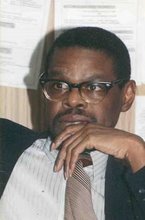On Monday night, September 15, 2008, Brandon McClelland was walking along FM-2648 in Powderly, just north of Paris, Texas, when he was struck and killed and his body dragged 70 yards down the highway. When his body was found around 5 am, the family was told that he was possibly the victim of a hit and run accident, perhaps by a gravel truck traveling at a high speed.
This speculation would later plant a seed of doubt that this could possibly be a murder.
James Mitchell Laster tipped off the authorities that Shannon Keith Finley had boasted to him that he had intentionally run over McClelland. Finley and Charles Ryan Crostley were the last two people to see McClelland alive. They were arrested and charged with his death.
But from the very beginning, the case has been shrouded in mystery. Was it murder? Or, was it an accident? And, if it was murder, was it a hate crime as defined by the law?
Last week, special prosecutor Toby Shook moved that the charges against Finley and Crostley be dismissed for lack of evidence.
An initial examination of Finley’s truck reported findings of human DNA remains. But that story was quickly retracted when an Arkansas truck driver came forth and claimed that he “may have” accidentally struck McClelland.
As a result of the dropping of the charges, the parents of Brandon McClelland took to the streets of Paris in protest, vowing to bring the attention of the case to Attorney General Eric Holder.
Watching the demonstration in Paris from across the way, and waving a Nazi Iron Cross, was Rock Banks, Grand Titan of the East Texas Ku Klux Klan.
Eddie Griffin Commentary
Where reasonable doubt may be sufficient for some people to dismiss this case, the investigation is far from exhaustive.
We must look at the related actions of the principal suspect, Shannon Finley, before and after September 15. Finley was an ex-convict who had been released from the Texas prison system, a system where literally all white inmates are recruited and initiated into the Aryan Brotherhood or Aryan Nation, an avid white supremacist group, most noted for drug trafficking and murdering blacks and Latinos. They usually wear a tattoo designating their affiliation.
It was members of the same racist prison group that carried out the dragging death of James Byrd in Jasper, Texas in 1998. The group is widespread throughout the state and federal prison system, and is becoming more and more dispersed throughout society. It began as a self-protection group against the prison dominance black inmates, but later itself became more aggressive and murderous. Compared to the KKK, they are more vocal and direct in preaching racial hatred and advocating murder.
Shannon Finley’s prison affiliation could not be as fickle relationship, for once inducted into its ranks, a white inmate was a member for life.
The second point that doesn’t add up is Finley and Crostley going to the home of McClelland to invite him out on a drinking spree. The plan was to go across the state line to Oklahoma and purchase some booze.
This presents an incomprehensible scenario in several respects. First, Paris was once known for lynching. It was written in blood throughout the city’s history.
Second, why would a known white supremacist go to pick up a black man and take him down a dark lonely highway to Oklahoma and get drunk on the way home?
Most crimes are carried out under the influence of an intoxicant. And, boozers sometimes get so drunk that they don't know what they are doing or appreciate the consequence of their action. They are literally too intoxicated to even know the nature of the spirit within them. Their reality is a blackout. How can they then remember something they never knew they did?
The records show that, somehow, an argument broke out on the way home over Shannon Finley’s drunken driving. That being said, it is not hard to imagine Finley scaring McClellan to death in his pickup truck with his reckless driving. Maybe it was Finley’s intent to scare the hell out of the black man. In any case, McClellan demanded to be let out on the highway. He would rather walk the rest of the way home from Powderly to Paris, which would be no short walk. Nevertheless, it was probably better than staying in the truck with Finley behind the wheel.
At this point, some say that McClellan was hit by a gravel truck traveling at a high rate of speed. What they do not say is if the gravel truck was the first or second vehicle to run over him.
Fourth, why would Finley return home, wash his truck, and then leave town after McClellan's body was discovered? Why did he leave and go to Wichita, Kansas, instead of helping the authorities solve the mystery of his death? If he were such a friend, why would he not come and comfort the family after learning of his friend's death?
Summarizing, here is a white supremacist and his friend, picking up a black man, to take on a boozing junket across state line, down a dark and lonely stretch of highway. The black man protested the erratic driving of the driver and demanded to be put out on the highway. Someone runs over him and drags his body down the highway. An informant tips off the authorities that the truck owner boasted over running over the victim. He goes home, washes his truck, and takes off for Kansas as soon as the body is found, rather than helping the authorities or comforting the family?
It just doesn’t add up.
Subscribe to:
Post Comments (Atom)





i'm not a fan of you or your history (just glancing at it) but you do a good job presenting this in a non-biased way.
ReplyDeletethanks